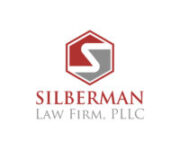
When involved in a boundary dispute, a landowner needs to know their legal rights and remedies, as well as the rights and remedies available to the party with whom the landowner is having a dispute. Adverse possession is a fairly well-known avenue for obtaining legal right to another’s real property, but a lesser-known method of doing so is acquiescence.
Acquiescence refers to ceding part of a property to another party by virtue of a mutual agreement stemming from a disagreement over a boundary line. To prove this the mutual agreement transpired, ". . . evidence must be presented to show that ‘there was some uncertainty as to the true boundary, which resulted in a line being established (generally by a fence), and that thereafter the adjoining land owners acquiesced in and recognized this line as the true boundary line between them.’” RDG P'ship v. Long, 350 S.W.3d 262, 269 (Tex. App. 2011) (quoting Boothe v. Fuentes, 262 S.W.2d 754, 755 (Tex. Civ. App.-San Antonio 1953, no writ).
For example, if a farmer is planning to build a fence along the edge of his property and he thinks the property ends in one place and his neighbor comes over and contends the property ends in another, there is uncertainty and disagreement as to the true boundary of the property. If the neighbors then agree to a line to settle the dispute and a fence is built along this line, this likely qualifies as acquiescence.
The key element to acquiescence is uncertainty or disagreement as to the boundary line. “The existence of uncertainty, doubt or dispute is essential to the validity of such agreement.” Gulf Oil Corp. v. Marathon Oil Co., 137 Tex. 59, 64, 152 S.W.2d 711, 714 (1941). In situations where the boundary is clearly known, such as a survey showing the true property line, acquiescence may not apply. It must also be shown that a new boundary line was agreed upon to resolve the dispute. The dispute does not have to be a formal dispute where the parties have taken legal or some other form of action against each other. Id.
It is important to note that merely being mistaken as to where a property line lies will not count as acquiescence. For example, if a landowner builds a fence along what they believe to be the boundary of their property when instead the boundary is 5 feet farther, this will not qualify as the landowner acquiescing their property to their neighbor. There was no uncertainty or dispute as to the boundary line, there was merely a mistake of fact.
Whether defending or initiating a suit involving acquiescence or other boundary disputes in Texas, it is important to retain an experienced real estate lawyer to guide you through the process and ensure your legal rights are protected.
All information provided on Silblawfirm.com (hereinafter "website") is provided for informational purposes only and is not intended to be used for legal advice. Users of this website should not take any actions or refrain from taking any actions based upon content or information on this website. Users of this site should contact a licensed Texas attorney for a full and complete review of their legal issues.
